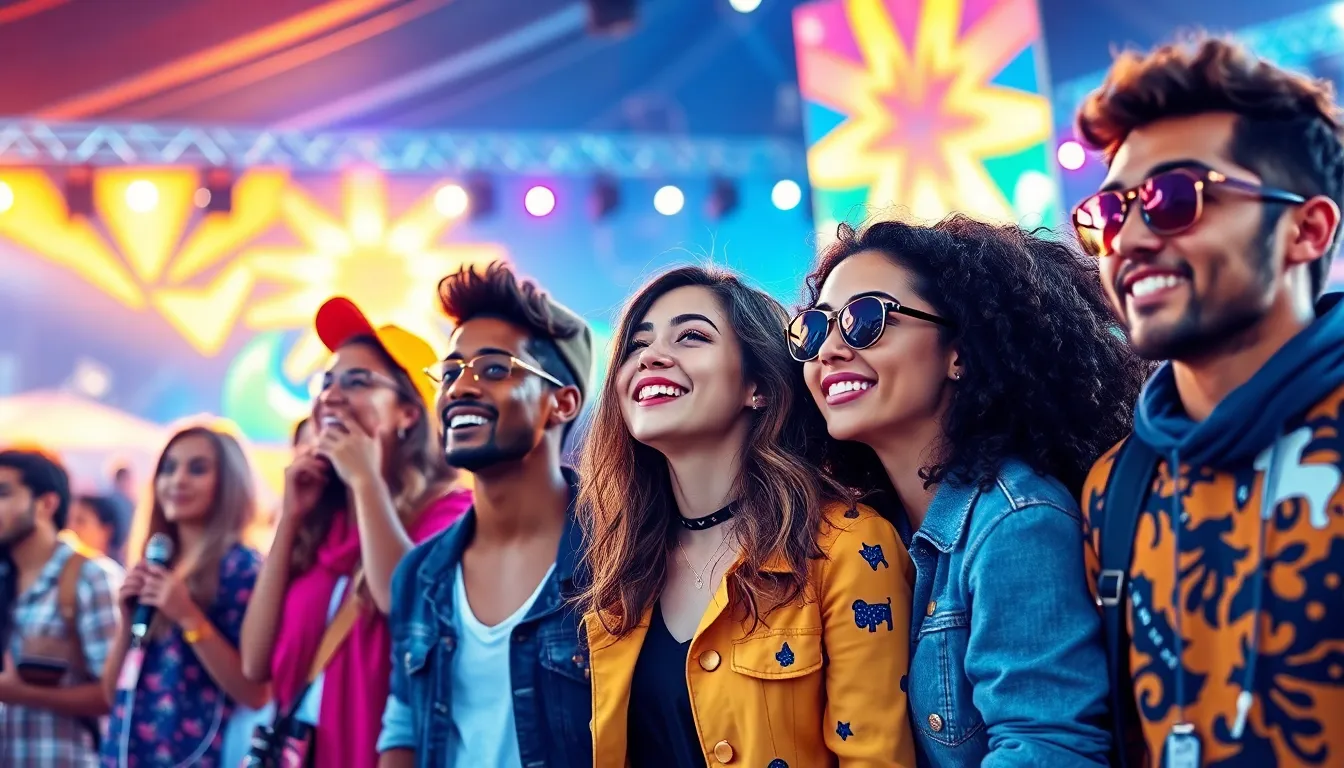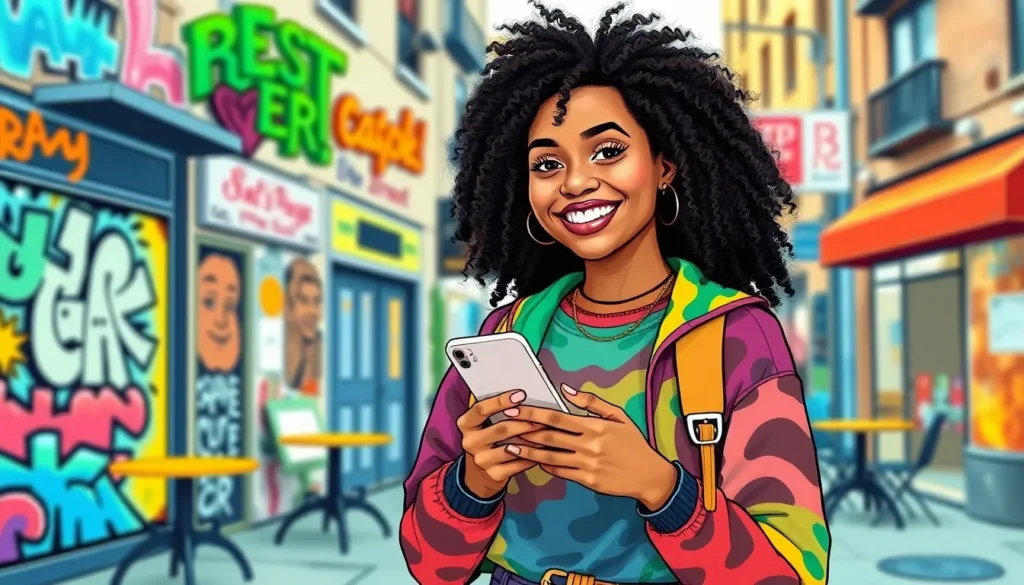In a world where memes spread faster than a cat video can go viral, global pop culture has become the universal language of connection. From K-pop sensations taking over music charts to binge-worthy series that keep audiences glued to their screens, it’s clear that pop culture knows no borders. It’s a wild ride where trends shift quicker than a TikTok dance challenge.
But why should anyone care? Because understanding global pop culture isn’t just about knowing the latest dance moves or celebrity gossip. It’s about grasping the pulse of society, the trends shaping our world, and the stories that unite us all. So buckle up as we dive into the colorful tapestry of global pop culture, where every meme and viral moment tells a story worth exploring.
Table of Contents
ToggleOverview of Global Pop Culture
Global pop culture encompasses a range of cultural phenomena that resonate across different nations. Its influence permeates various aspects of life, including music, film, fashion, and social media. Trends in pop culture often rise and fall rapidly, driven by digital platforms and global connectivity. Platforms like TikTok and Instagram play significant roles in sharing these trends, allowing content to transcend geographic boundaries.
Memes, music hits, and viral challenges often emerge from diverse sources yet gain worldwide recognition. For instance, K-pop groups have garnered massive followings outside South Korea, showcasing the power of international fan engagement. Similarly, Hollywood blockbusters attract audiences globally, demonstrating the universal appeal of storytelling.
Cultural exchange occurs as individuals around the world adopt and adapt elements from different regions. As a result, what starts as a local phenomenon frequently evolves into a global sensation. For example, Latin music genres have substantially impacted charts far beyond their origins, reflecting the seamless blending of artistic influences.
In addition, popular figures, including actors, musicians, and influencers, shape global narratives and conversations. Their social media presence often amplifies their influence, connecting them to fans across distances. This phenomenon highlights the shared experiences that pop culture creates, fostering community among diverse audiences.
Understanding global pop culture involves recognizing its role in reflecting societal change and collective identity formation. Each trend and cultural artifact contributes to a larger narrative, underscoring the significance of pop culture beyond mere entertainment. Engaging with pop culture provides insights into contemporary issues and shared human experiences, making it a vital aspect of modern life.
Influences on Global Pop Culture

Global pop culture reflects the interconnectedness of societies through various compelling mediums. Key influences shape trends and narratives in music, film, television, and fashion.
Music Trends
Music trends often emerge from diverse cultural backgrounds. Globalization allows artists from different regions to collaborate and innovate. Genres like K-pop and reggaeton have gained popularity through streaming platforms, attracting millions of listeners. Additionally, social media amplifies these trends, making songs go viral in days. Popular collaborations often merge different musical styles, creating unique sounds that resonate across audiences.
Film and Television
Film and television play significant roles in shaping global narratives. International films and shows gain recognition through streaming platforms, showcasing stories from various cultures. The rise of content creators influences cinematic trends, as innovative storytelling captures viewers’ attention. Popular franchises like Marvel and series like “Squid Game” highlight the importance of diverse storytelling. These productions spark conversations about societal issues and cultural representation.
Fashion Statements
Fashion statements often transcend borders, influenced by cultural exchanges. Designers draw inspiration from various regions, blending traditional elements with modern aesthetics. Streetwear gained prominence through social media, allowing styles to spread rapidly among young audiences. Global fashion weeks highlight these trends, showcasing innovative designs that merge local and international influences. Fashion icons and influencers further shape consumer preferences, driving trends and encouraging self-expression through clothing.
The Role of Social Media
Social media serves as a critical element driving the rapid expansion of global pop culture. Platforms facilitate real-time interaction, allowing cultural phenomena to gain traction across different regions.
Platforms Driving Change
Social media platforms like TikTok, Instagram, and Twitter play pivotal roles in shaping trends. These platforms enable creators to share content instantly, fostering community engagement and encouraging user-generated contributions. TikTok’s unique algorithm promotes diverse content, making it possible for even niche memes to capture global attention. Instagram continues to influence fashion trends, with influencers and brands showcasing styles that transcend borders. Twitter amplifies discussions around pop culture events, allowing real-time reactions and global conversations.
Viral Trends and Memes
Viral trends and memes proliferate rapidly through social media networks. Memes often encapsulate cultural moments or humor, resonating with users worldwide. They evolve quickly, adapting to current events or popular figures, which keeps them fresh and relevant. The “Ice Cream Challenge” gained popularity as users shared their takes on this quirky trend, demonstrating widespread participation. As seen with the “Distracted Boyfriend” meme, familiar visuals create relatable content that easily spreads across platforms, building cultural connections and shared experiences.
Cultural Exchange and Fusion
Cultural exchange and fusion play a vital role in global pop culture. Various art forms intertwine, leading to innovative expressions that resonate across cultures.
Globalization of Art Forms
Globalization facilitates the flow of artistic influences across borders. Visual arts, music, and dance now borrow elements from diverse traditions. Hip-hop music draws inspiration from African beats while incorporating local dialects. Additionally, street art has gained international recognition, with artists like Banksy impacting urban landscapes worldwide. Each art form evolves, reflecting a rich tapestry of global influences, exemplified by the infusion of traditional instruments in modern pop music.
Case Studies of Successful Crossovers
Numerous successful crossovers demonstrate the power of cultural fusion. K-pop illustrates this trend, blending Korean musical styles with Western pop influences and visuals. BTS, a prominent boy band, achieved massive popularity worldwide, topping charts in multiple countries. Sushi became a global phenomenon, transforming from a niche Japanese dish to a beloved culinary staple across cultures. Each case study conveys how cultural adaptations create broader appreciation and understanding while reinforcing connections among diverse communities.
Challenges and Criticism
Global pop culture faces significant challenges and criticism. Various issues arise as its influence expands.
Homogenization of Culture
Homogenization poses a threat to cultural diversity. As global pop culture spreads, local traditions often diminish. Unique customs may fade under the weight of mainstream trends. Influences from dominant cultures frequently overshadow marginalized voices. Individuals from different backgrounds report a loss of authenticity in their artistic expressions. The prevalence of similar styles creates a one-size-fits-all aesthetic. Generic trends can lead to cultural sameness, diminishing the richness of human experience. Awareness of these phenomena encourages conversations about supporting local cultures and preserving their distinctiveness.
Issues of Representation
Representation in global pop culture often lacks depth and diversity. Significant underrepresentation of certain groups persists in popular media. Women and minorities frequently face stereotypical portrayals that can perpetuate harmful narratives. Audiences increasingly demand authentic stories that reflect their experiences. When creators overlook diverse perspectives, they miss opportunities for meaningful connections. Frustration grows as fans call for appropriate representation in film, music, and fashion. Many argue that inclusive narratives enrich cultural dialogue and lead to broader understanding. Addressing these representation issues is crucial for a more equitable global cultural landscape.
Global pop culture serves as a dynamic tapestry that weaves together diverse narratives and shared experiences. Its ability to transcend borders highlights the power of connection in an increasingly digital world. As trends evolve and cultural exchanges flourish, the landscape remains vibrant and ever-changing.
While challenges like cultural homogenization and representation persist, the demand for authentic and inclusive stories continues to grow. These narratives enrich the global dialogue and foster a deeper understanding of different perspectives. Engaging with global pop culture not only entertains but also informs and inspires, making it an essential part of contemporary life.



